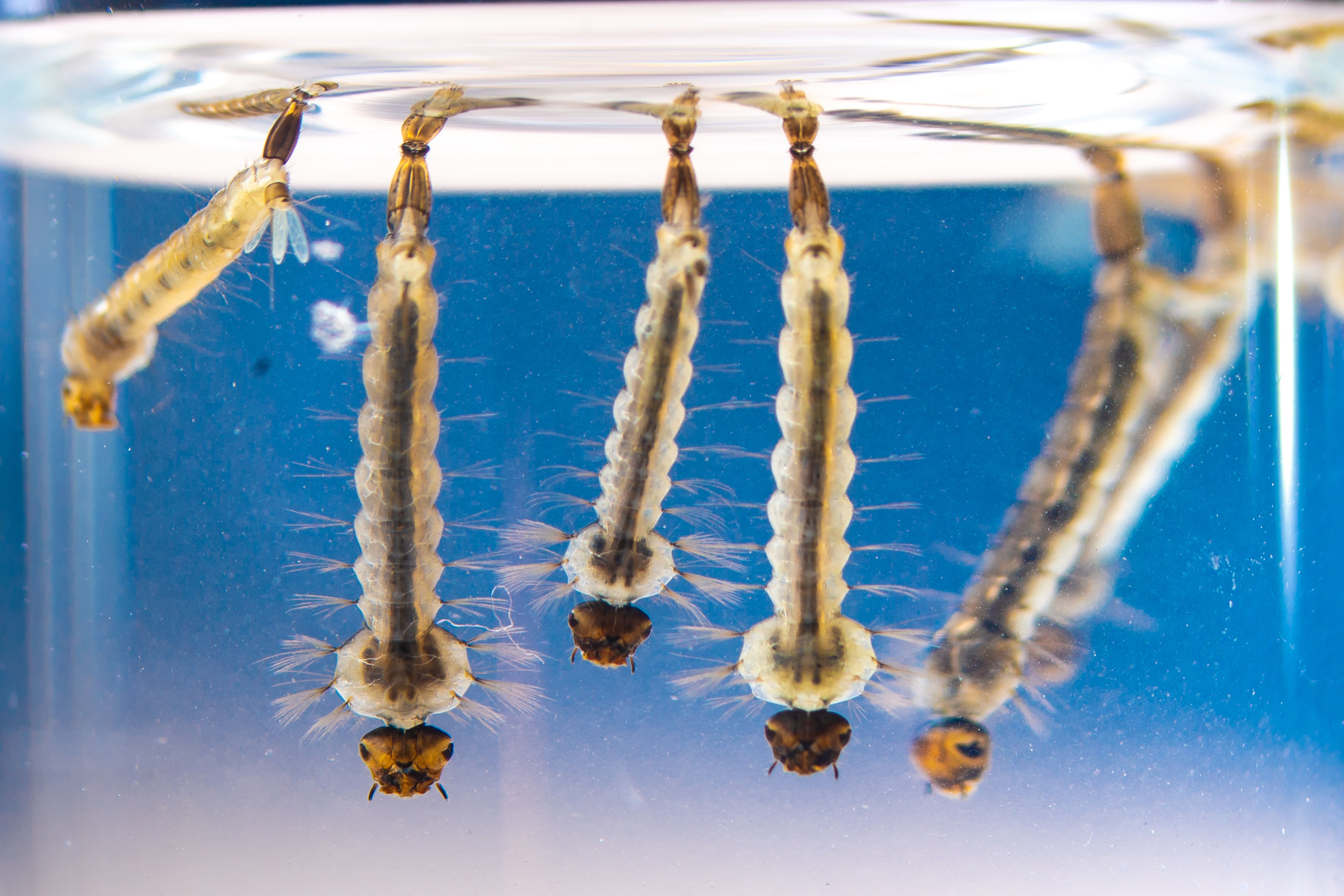
1. Context and Background
Mosquitoes congregate and breed in ponds, lakes, or even small puddles, but what happens when a lake suddenly appears that has not been there for over 25 years? After the extraordinary winter precipitation in 2022/2023, and the subsequent release of meltwater, California is facing this exact scenario.
Extreme weather isn't a fresh topic, but its increasing frequency and intensity are grabbing headlines for a good reason. The impacts of these events extend beyond the duration of any one storm, because like all things in nature, these events are part of a complex network and lead to cascading interactions. In this case, after the sudden re-emergence of Tulare Lake in Central California, the area is not only facing the challenge of unprecedented flooding, but this same flooding is giving mosquitoes more places to breed, which in turn may lead to a dangerous increase in mosquito borne illness in humans.
Fortunately the U.S. Department of Agriculture (USDA) recognized the need for swift action and stepped in with funding for fast-track research. The USDA has a detailed grant program and further information can be found in the CRIS database. They're particularly keen on exploring the effects of extreme weather on our food and agricultural systems.
We are excited to announce that Bren’s own Andrew MacDonald is leading the team that was awarded this grant. With this funding secured, Andy and a team of researchers from multiple universities are using satellite imagery to track these new water bodies in near real-time, and coordinating with on the ground vector control departments in order to monitor the effect of all this water on mosquito populations and the diseases associated with their increased prevalence.
Tulare Lake in central California seen from a plane (photo credit: Andrew MacDonald)
2. Monitoring and Surveillance
There are two main data sources that are being used to model the risk of mosquitoes to human populations. Temperature, precipitation, and standing water are all measured by satellite and then combined with on the ground reports from vector control districts trapping and studying mosquitoes to identify different species and detect harmful viruses they may carry. As we grapple with this explosion in mosquito numbers, the satellite earth data and early warning systems set up by vector control districts across California are more crucial than ever.
Key Data Sources
Landsat Satellite Program
Satellite technology is playing an impressive role in mapping out potential breeding grounds. The Landsat satellite system deployed by NASA and the U.S. Geological Survey (USGS) offers a 30m resolution, allowing researchers to detect standing water where mosquitoes could breed. This impressive constellation of remote sensors provides the longest continuous space-based record of Earth's land in existence.
Copernicus Sentinel Program
For a more detailed view, researchers are collaborating with the European Space Agency's Sentinel and Sentinel-2 programs. These provide even higher resolution imaging, with some of it’s sensors achieving a resolution of 10m. This growing program provides similar data to Landsat, and continues the legacy of support for tasks like land management, disaster control, and risk mapping.
PRISM Climate Group
In addition to satellite imagery, the PRISM group at Oregon State offers a robust dataset that includes changes in temperature, humidity, and precipitation at a 800m resolution. All these factors can influence mosquito breeding, so the PRISM dataset gives Andy and his team a much more complete picture of the situation.
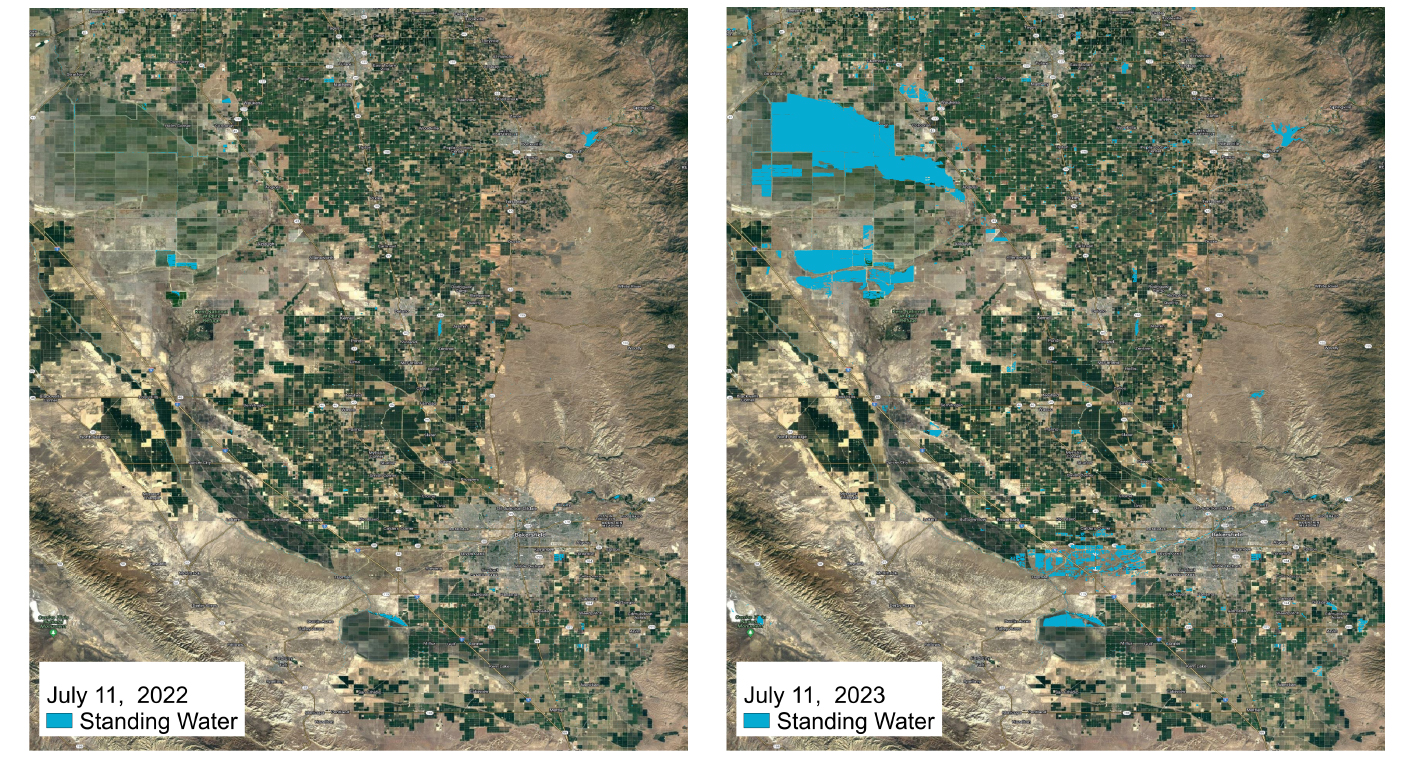
Comparison of standing water in California 2022 to 2023
Vector Control Districts
Vector Control Agencies in districts across the state are working to monitor mosquito populations and track the spread of the pathogens they carry. These agencies also play a critical role in reducing mosquito populations, targeting larval mosquitoes by providing residents with free mosquitofish and treating high risk areas with less toxic materials like:
- Bacillus thuringiensis israelensis,
- Bacillus sphaericus, and
- Methoprene.
Andy's team is also integrating land cover data from Kern County, coupled with the National Land Cover Dataset from the US Geological Survey (USGS). This offers a nuanced understanding of local conditions, essential for the development of their risk assessments and models for future events.
3. Species and Behavior
Understanding mosquito species and their behavior is essential for targeted intervention strategies. As climate change alters landscapes, it is paving the way for tropical Aedes mosquitoes to establish themselves in California, alongside our local Culex variety. These newcomers bring with them a host of new health risks.
What types of mosquitoes are there in California?
The two main types of mosquitoes posing threats in California are:
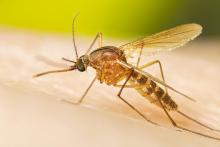
-
Culex Mosquitoes: Specialists in Avian-hosted Diseases
- Active mainly during dawn and dusk.
- Common in urban, rural, and peridomestic environments.
- These mosquitoes prefer to feed on birds, making them primary carriers of avian-borne viruses like West Nile.
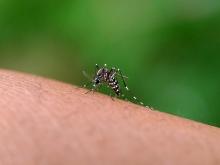
-
Aedes Mosquitoes: Carriers of Tropical Diseases
- Active throughout the day.
- Known for transmitting viruses like dengue, Zika, and chikungunya.
- Although these mosquitoes are less common in California, they are becoming an increasing concern due to reports of local transmissions in states like Texas and Florida.
More images to assist with identification are available from the CDC.
A Network of Factors
Ecological Adaptability
Mosquitoes are highly adaptable to environmental changes. While there are numerous mosquito species, only a select few serve as significant vectors for diseases. Factors such as temperature and water availability can rapidly influence their breeding behaviors, so developing a risk model for mosquito borne illness is dependent on having a clear picture of these factors.
Birds as Virus Carriers
Birds in the family of Corvids, such as crows, ravens, and magpies, are efficient at harboring and spreading viruses, particularly West Nile. These birds are known in the scientific community as 'competent hosts.' These species can thrive in a wide range of habitats, meaning the risk of the vectors that they host is widespread.
Impact of Climate and Seasonality
Mosquito behavior and disease risk are not solely determined by breeding grounds or feeding preferences. Seasonality and climate are vital factors. For example, bird migration patterns can influence the geographical spread of viruses. There is also the seasonal pattern of the mosquitoes themselves, with the months between April and October representing the main biting season.
4. Impact and Concerns
Crisis in Kern County
Unprecedented flooding in Kern County this year has coincided with a dramatic spike in mosquito populations, signaling an urgent need for public health action. Understanding mosquito ecology is not just an academic endeavor; it has practical implications for public health. As extreme weather events become more common, grasping these complexities is crucial for effective control measures.
Mosquito Borne Diseases in California
While the inconvenience of mosquito bites is universally acknowledged, the potential health risks they pose often remain underappreciated. Recent surveillance data in Central Valley reveals a significant uptick in vector-borne diseases—124 reported cases of West Nile Virus and one case of St. Louis encephalitis as of publication on 9/25/2023. Though these numbers may appear modest, they mark a considerable increase relative to historical figures. In a context where there are no direct treatments for these vector-borne illnesses, preventive measures emerge as our most effective safeguard.
- Stay current on West Nile Virus in California: https://westnile.ca.gov/
Knowledge stands as not just an intellectual asset but our most formidable weapon against these burgeoning health threats. For example, few people know that the Aedes mosquito can breed in a water source as small as a pool of water in an old abandoned tire. Others may not be aware that they can receive mosqutiofish for free from Vector Control Districts in order to eliminate mosquito larvae in backyard ponds. Once people understand the nature of the risk, and their associated risk profile, then they can make informed decisions regarding the preventative measures most appropriate for their situation.
An Urgent Response
The stakes are unequivocally high. As new disease patterns emerge, we find ourselves in an escalating situation. Previously designated 'safe zones' may not retain their low-risk status amidst climate changes and adaptive mosquito behavior. This dynamic landscape calls for constant vigilance and flexibility in our preventive approaches. The endeavors in research, monitoring, and public awareness transcend academic boundaries; they are pragmatic imperatives to mitigate imminent threats.
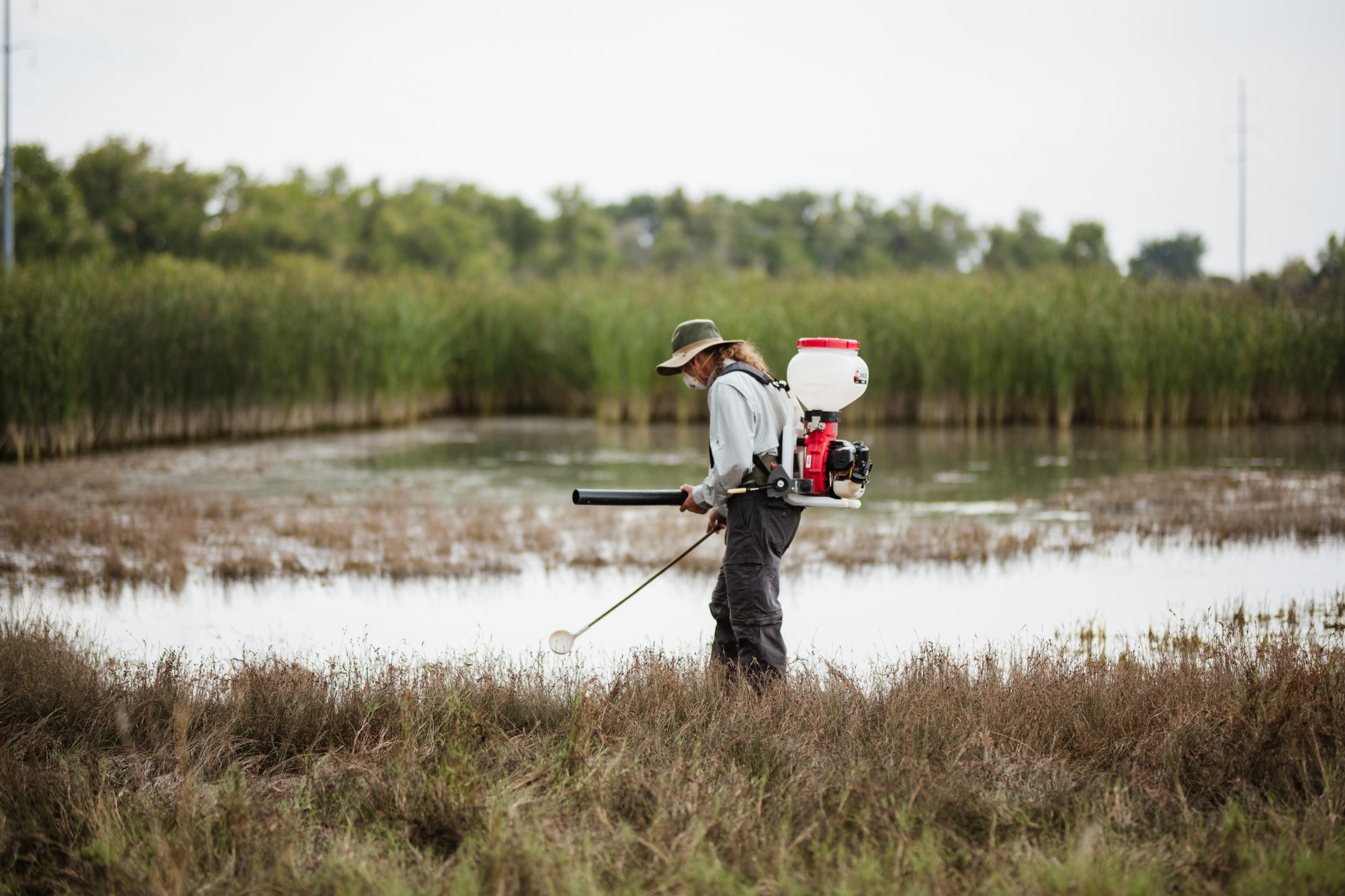
5. A Multifaceted Strategy for Prevention and Solutions
Preventative measures unfold across a spectrum—from sweeping initiatives to individual actions, each contributing to our collective defense. It is important to be aware of both the large levers available for change, and the small steps we can all take to reduce risk for our communities.
Large-Scale Initiatives
When it comes to reducing mosquito populations, strategies like treating mosquito breeding sites and adulticidal spraying are foundational. The challenge resides in pinpointing water bodies of sufficient scale for impactful intervention. Consider these the heavy artillery of mosquito control.
Individual Actions
For localized action, several effective ways to kill mosquito larvae in water around your house, whether that is a pond, pool, or fountain. The use of Bacillus thuringiensis israelensis (Bti) pods wipes out larval populations, and if you own a pond, introducing mosquito fish is often an effective solution. These small fish feed on larval mosquitoes and are available for free from your local vector control district.
In general, source reduction has a substantial impact. The influence of collective community actions, from contacting local vector control to personal preventative steps, is invaluable.
Data-Driven Risk Awareness
In partnership with researchers, new platforms are emerging that offer real-time data, enriched with remote sensing imagery, to model, map and monitor disease risk as it responds to environmental change, which Andy’s team is at the forefront of developing.
Equitable dissemination of this crucial information remains a challenge. Ensuring that this reaches diverse demographics—including migrant and urban communities—requires multilingual outreach and strong partnerships with community organizations.
The path forward may be fraught, yet aligned efforts across policy, science, and public spheres can reduce the risk of mosquito borne illness and steer us towards a healthier future.

6. Navigating an Evolving Landscape
Complacency is not an option. In regions like Kern County, the situation is escalating with an unprecedented surge in mosquito populations. Coupled with the challenge of effectively communicating risks to a diverse population, we are in an increasingly intricate situation.
Predictive Analytics
Emerging data science techniques offer the possibility of forecasting disease outbreaks. Monitoring hotspots like Kern County aids in refining predictive models that guide our preparedness, transcending speculative scenarios to ground us in data-driven realism.
Ecological Stewardship
The goal isn't simply the eradication of mosquito populations, but achieving this while maintaining ecological equilibrium. Sustainable methods are therefore not merely desirable; they are imperative for ethical and long-term effectiveness.
While uncertainties abound, our toolkit—comprising rigorous science, public involvement, and strategic foresight—equips us to navigate this intricate landscape. Ahead lie not just challenges but opportunities to innovate, enlighten, and fortify our communities. The task may be formidable, but the power of collective resolve should not be underestimated. At the Bren School, we are proud to be a part of this multi-faceted solution. Stay up to date on developments from Andy’s team by visiting his website:



